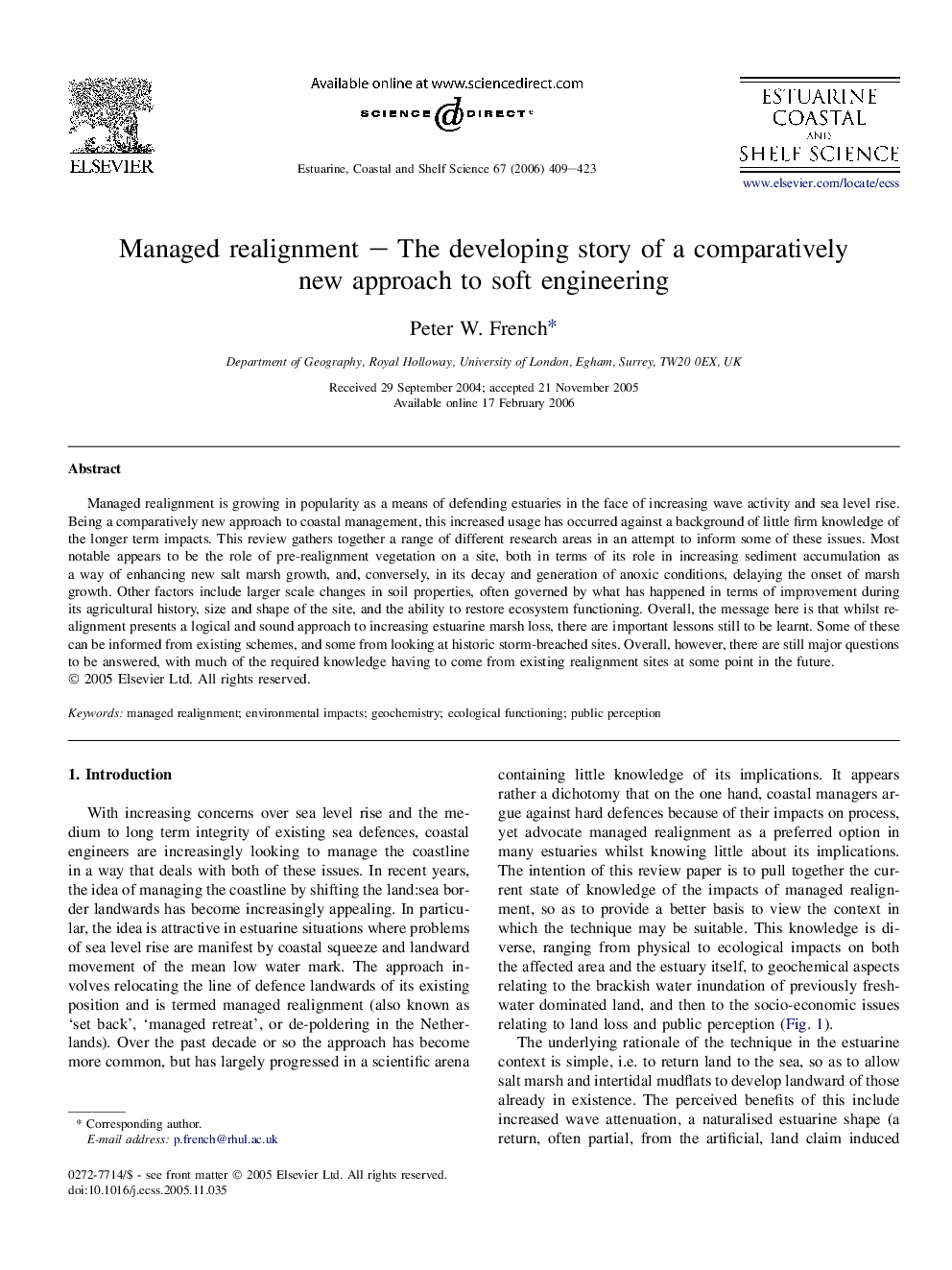| Article ID | Journal | Published Year | Pages | File Type |
|---|---|---|---|---|
| 4542396 | Estuarine, Coastal and Shelf Science | 2006 | 15 Pages |
Managed realignment is growing in popularity as a means of defending estuaries in the face of increasing wave activity and sea level rise. Being a comparatively new approach to coastal management, this increased usage has occurred against a background of little firm knowledge of the longer term impacts. This review gathers together a range of different research areas in an attempt to inform some of these issues. Most notable appears to be the role of pre-realignment vegetation on a site, both in terms of its role in increasing sediment accumulation as a way of enhancing new salt marsh growth, and, conversely, in its decay and generation of anoxic conditions, delaying the onset of marsh growth. Other factors include larger scale changes in soil properties, often governed by what has happened in terms of improvement during its agricultural history, size and shape of the site, and the ability to restore ecosystem functioning. Overall, the message here is that whilst realignment presents a logical and sound approach to increasing estuarine marsh loss, there are important lessons still to be learnt. Some of these can be informed from existing schemes, and some from looking at historic storm-breached sites. Overall, however, there are still major questions to be answered, with much of the required knowledge having to come from existing realignment sites at some point in the future.
